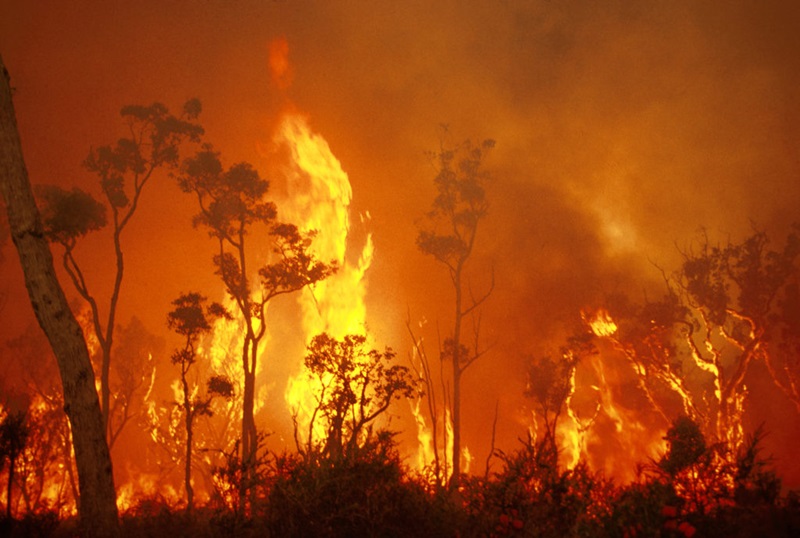Ensuring Shrub Fire Security Via Proper BAL Report Evaluation
In the realm of bush fire protection, the careful evaluation of Bushfire Attack Degree (BAL) reports stands as a foundation for securing buildings against the damaging impact of wildfires. With environmental factors and home attributes playing substantial duties in establishing the level of danger, a detailed understanding of BAL rankings ends up being necessary. However, the real significance exists not just in comprehending these reports yet in decoding them efficiently to formulate customized fire security strategies. By diving into the relevance of BAL report evaluation, we discover a world where informed choices pave the course in the direction of boosting residential property security and strength in fire-prone regions.
Understanding Bushfire Strike Level (BAL)
In the world of bushfire security, understanding the Bushfire Assault Degree (BAL) is critical for making certain efficient mitigation approaches. BAL is a system used to measure the potential danger a building may deal with from a bushfire. It takes into consideration elements such as the kind of greenery, the slope of the land, the Fire Risk Index, and the Fire Extent Index. Recognizing the BAL ranking of a residential or commercial property is important for building builders, proprietors, and policymakers to carry out proper steps to protect versus bushfire hazards.

Importance of BAL Report Analysis
An essential element in bushfire protection preparation entails the detailed evaluation of BAL reports to assess the possible threats and figure out suitable mitigation approaches. BAL reports offer essential details regarding the potential influence of bushfires on a property based upon different factors such as plant life type, distance to possible fire dangers, and slope of the land. Analyzing these records with precision is extremely important in establishing effective bushfire defense procedures tailored to the specific danger profile of a property.
Applying Fire Security Measures
Applying reliable fire security measures is vital for protecting residential or commercial properties in bushfire-prone locations. One of the key methods to boost fire protection is by producing defensible room around buildings. This entails clearing combustible greenery, such as completely dry leaves and branches, browse around this web-site within a specific radius of the property. Furthermore, installing fireproof roofing materials can aid decrease the threat of embers stiring up the roofing throughout a bushfire. Correctly kept displays and gutters are likewise important to protect against particles buildup that could fuel a fire.
Additionally, having a well-kept and sufficient water supply, such as a tank or swimming pool, can assist firemens in their efforts to secure the residential or commercial property. BAL Report. Overall, carrying out a combination of these fire security measures can substantially increase the opportunities of protecting properties during bushfire occasions.
Mitigating Risks in Fire-Prone Areas
To strengthen buildings versus bushfire hazards, a critical emphasis on mitigating dangers in fire-prone areas is vital. go now One vital element of danger mitigation is maintaining defensible space around properties by getting rid of combustible plants, making sure sufficient spacing between trees and structures, and using fireproof landscaping practices.
In addition, creating or retrofitting structures with fireproof products and guaranteeing proper upkeep of roofings, rain gutters, and external cladding can dramatically improve the residential property's durability to bushfires. Exercising a bushfire and developing emergency situation strategy with all occupants, consisting of emptying procedures and interaction methods, is also essential in mitigating dangers efficiently. By adopting a positive method to risk reduction in fire-prone areas, homeowner can much better secure their possessions and enhance general bushfire preparedness.
Ensuring Residential Property Security and Resilience
Making sure the safety and security and strength of buildings in fire-prone locations calls for an unwavering dedication to durable precautionary steps and tactical planning. Residential or commercial property safety begins with implementing reliable actions to lower fire threats.
Durability, on the various other hand, involves navigate to this website the capacity of a home to recoup and endure from a bushfire. By proactively resolving these aspects, building owners can better secure their assets and liked ones from the danger of bushfires.
Conclusion
Finally, making certain bushfire protection with appropriate BAL record evaluation is essential for recognizing the degree of risk positioned by bushfires and applying necessary fire protection steps. By minimizing threats in fire-prone areas and guaranteeing residential property safety and security and strength, communities and individuals can better get ready for and react to bushfire occasions. It is essential to prioritize fire security procedures to secure lives and building in these risky settings.
In the world of bush fire defense, the thorough evaluation of Bushfire Assault Degree (BAL) reports stands as a foundation for protecting residential properties against the disastrous effect of wildfires (BAL Report). Comprehending the BAL score of a residential property is critical for building policymakers, owners, and contractors to apply ideal procedures to secure against bushfire threats

BAL reports supply critical details concerning the potential impact of bushfires on a home based on different aspects such as plants kind, range to prospective fire dangers, and incline of the land (BAL Report). Generally, carrying out a mix of these fire security procedures can substantially boost the possibilities of securing residential properties throughout bushfire events
Comments on “Debunking BAL Reports: A Guide to Understanding Your Home's Bushfire Danger”